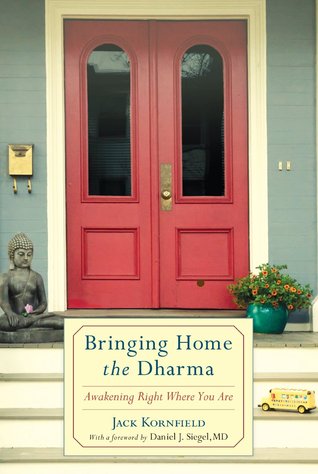More on this book
Community
Kindle Notes & Highlights
What matters in life is simple. Are you free and loving? Are you bringing your gifts to the world that so badly needs them?
These four radiant abodes are loving-kindness, compassion, joy, and equanimity (or peace). These abodes are the expression of natural human happiness.
If we set a long-term intention, it remains empowering no matter who wins a particular election, or what governments rise and fall. It becomes our way of practice. Thomas Merton taught, “Do not worry about immediate results. More and more you must concentrate on the value, the rightness, the truth of the work itself.” With a dedicated intention we are willing to face the sufferings of the world and not shy away, to follow what we know is true, however long it takes. This is a powerful act of the heart, to stay true to our values and live by them.
Ralph Waldo Emerson explains: To leave the world a bit better, Whether by a healthy child, A garden patch, A redeemed social condition, To know even one life has breathed easier Because you have lived, This is to have succeeded.
As Gary Snyder says, All of us are apprentices to the same teacher that all masters have worked with—reality. Reality says: Master the twenty-four hours. Do it well without self-pity. It is as hard to get children herded into the car pool and down the road to the bus as it is to chant sutras in the Buddha Hall on a cold morning. One is not better than the other. Each can be quite boring. They both have the virtuous quality of repetition. Repetition and ritual and their good results come in many forms: changing the car filters, wiping noses, going to meetings, sitting in meditation, picking up
...more
This is the first task of the spiritual path, to focus and steady the fluctuating, frenetic mind. The present moment is the entry into spiritual realms, because the past is just memory and the future is just imagination. The present moment provides the gateway to enter into all the realms of consciousness that are beyond the everyday level.
In order to work with these common hindrances, we must learn to identify them clearly. The first is desire, the wanting mind. The second is its opposite which is aversion—dislike, resistance, judgment, anger, and fear; all those mental states in which we push away or reject our experience. The next is sleepiness, dullness, and lethargy (also forms of resistance to experience); and the fourth is its opposite: agitation and restlessness of mind. The fifth is doubt, the voice in the mind that says, “This breath practice is boring and dull. What good is it?”
When we become skillful at being mindful of these hindrances and look carefully and closely, we find that no state of mind, no feeling, no emotion actually lasts more than fifteen or thirty seconds before it is replaced by some other one. But we must look really closely to see this. We might be angry, and then, if we name it—“angry . . . angry”—and observe this state with patient attention, then we soon discover it is no longer anger, it has now turned into resentment. The resentment is there for a little while and then it turns into self-pity. Then we observe the self-pity and it turns into
...more
By establishing a practice of basic morality, of nonharming, virtue becomes a safeguard on the path, guiding and protecting us and all we touch from harm. In the simplest fashion these safeguards are spelled out in the five traditional Buddhist precepts: (1) not killing, (2) not stealing, (3) not speaking falsely or with words that are undermining or untrue, (4) refraining from sexual misconduct and sexual activity that causes suffering or harm to another person, and (5) refraining from intoxicants that lead to the point of heedlessness or loss of awareness.


